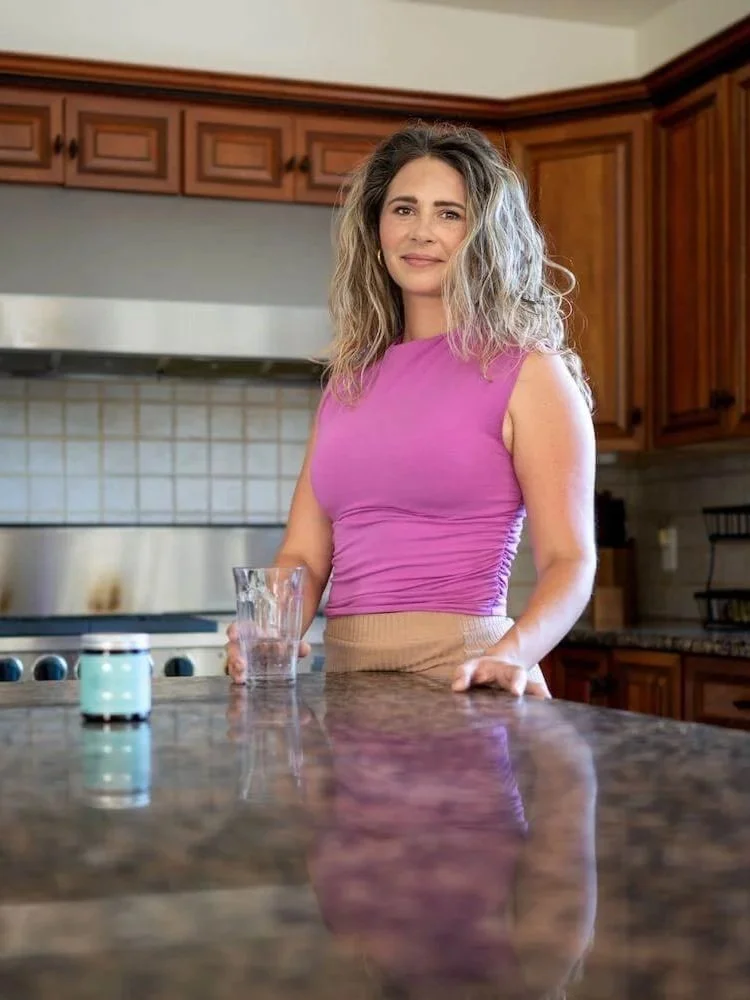Eliminating Endocrine Disruptors and Toxins in Your Home
Today we’re discussing a super important topic: finding endocrine disruptors and toxins in your home. By identifying these harmful substances, you can make informed choices to support hormone balance and overall wellness.
Let's dive in!
Why Reduce Toxic Exposure
Before we explore specific items in your home that may disrupt your hormones, let's understand why it matters. Our hormones act as messengers, facilitating communication between different parts of our body. Disruptive substances, known as endocrine disruptors or xenoestrogens, can interfere with this communication. They block hormone receptors and even mimic the actions of hormones like estrogen, leading to imbalances and potential health issues.
While it's nearly impossible to completely eliminate toxins from our environment, it's essential to reduce our exposure to them where we can. Everyday items, such as cleaning products, skincare products, and personal care items, often contain harmful chemicals. By minimizing toxic exposure, we support the health and function of our detoxification organs, particularly the liver and kidneys.
Identifying Endocrine Disruptors in Your Home
To begin addressing endocrine disruptors, let's start with the biggest offender: artificial fragrance. Artificial fragrance is EVERYWHERE. It can be found in so many products, like makeup, skincare, candles, detergents, and dishwashing soaps - just to name a few! This widespread use makes it a significant hormone disruptor since we can find it in almost every area of our home.
Start by checking the products you use for artificial fragrance and consider transitioning to those with natural fragrances or essential oils, keeping in mind the importance of sourcing and quality. But before you run out and feel like you have to throw everything away and start over, here’s what I do to keep this simple: replace items with a non-toxic alternative one at a time, as they run out.
Transitioning to Non-Toxic Alternatives
Educating yourself about harmful substances is vital in making informed choices. Two valuable resources to assist you are the Think Dirty app and the EWG Skincare Database. These tools provide a starting point for understanding product ingredients and their potential toxicity levels. While they should not be the sole basis for product selection, they offer insight into why certain ingredients are flagged as toxic.
Also beware of greenwashing. Brands know that consumers are now on the lookout for toxins like BPA and parabens, but unfortunately, that doesn't mean they have switched to healthier or safer ingredients. So it's up to us to learn how to read the labels and understand how these ingredients are affecting us. In this podcast episode we talk all about how to become an educated consumer.
Transitioning to non-toxic alternatives for your everyday products is going to be a gradual process. When you finish up what you already have, take the time to research if it’s possible to replace them with low-toxin or toxin-free options. I’ve put together a whole switch and ditch guide, with info about brands that I love and trust. Remember, every small change contributes to reducing your toxic exposure over time. We also did a whole podcast episode about non-toxic living that is super helpful if you’re ready to start going non-toxic.
The Plastic Problem
Another critical area to address is the use of plastics, particularly in food storage and heating. Plastics, including those labeled as BPA-free, can contain hormone-disrupting chemicals such as BPA and phthalates. To minimize exposure, try using glass or stainless steel containers for food storage and avoid heating food in plastic containers. These small changes can have such a big impact on your hormone health and are especially important for boys due to the potential estrogenic effects of plastics.
To further understand the harmful effects of plastics and toxins on hormones, I recommend two informative books. "Boys Adrift" by Dr. Sachs highlights studies that reveal how plastics affect fish and male fertility. "It Starts with the Egg" by Rebecca Fett is all about the impact of chemicals on pregnancy and hormonal health. These two books are so, so, so enlightening. They both offer compelling evidence that underscores the importance of avoiding plastics and minimizing toxic exposure.
Eliminating Toxins is a Marathon Not a Sprint
Understanding and minimizing the presence of endocrine disruptors and toxins in your home is an essential step towards achieving hormonal balance naturally. By identifying and reducing exposure to harmful substances like artificial fragrances and plastics, you can support the health and function of your hormones and overall well-being.
Transitioning to non-toxic alternatives and using helpful resources like the Think Dirty app and EWG Skincare Database can guide you in making informed choices. But it’s not something you can do overnight. Don’t stress about doing everything perfectly right away. Every small change you make in reducing toxic exposure contributes to a healthier environment for your hormones. Embrace the journey of creating a home that supports your hormonal health, and enjoy the positive impact it can have on your overall wellness.
FREE GUIDE
Switch & Ditch Go-To Guide
Simple product swaps to help you remove toxins from your life.
Remember you do not need to rush to the store and throw out the products you currently have. This guide is to support you choose less toxic options when it's time to purchase again.
The recommendations presented in this blog are not a substitute for medical advice from a qualified doctor. Before making any changes to your diet and lifestyle, please consult with your health care provider.
Some of these links contain affiliate links.




